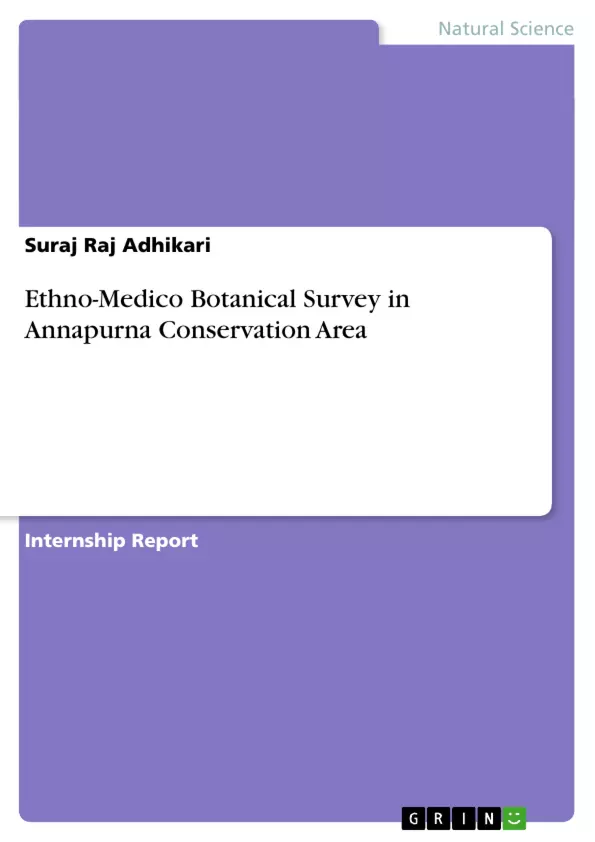A survey on ethenomedicine was conducted in Annapurna Conservation Area in order to document the indigenous knowledge of plant resources for their use in traditional medical practice and to estimate the stocking of medicinal plants in this region. Local people with good knowledge on use of plants were taken to fields for the exploration of medicinal plants. 24 species of medicinal plants belonging to 22 families were identified in Annapurna Conservation Area.
Inhaltsverzeichnis (Table of Contents)
- Chapter One
- 1.1 General background
- 1.2 Objectives
- Chapter Two
- 2.1 Literature Review
- Chapter Three
- 3.1 Plant collection and identification
- 3.2 Rural appraisal
- Chapter Four
- 4.1 Results
- Chapter Five
- 5.1 Conclusions and Recommendations
Zielsetzung und Themenschwerpunkte (Objectives and Key Themes)
This field report details an ethno-medico botanical survey conducted in the Annapurna Conservation Area (ACAP) of Nepal. The study aimed to document the indigenous knowledge of plant resources used in traditional medicine and to estimate the stocking of medicinal plants in the region.- The study explores the diverse plant resources used for medicinal purposes by local communities in ACAP.
- The report emphasizes the importance of preserving indigenous knowledge related to traditional medicine.
- It examines the ecological factors influencing the availability and distribution of medicinal plants in the region.
- The study highlights the potential of medicinal plants for economic development and sustainable practices.
- The report explores the cultural significance of medicinal plants and their role in the healthcare practices of local communities.
Zusammenfassung der Kapitel (Chapter Summaries)
- Chapter One: General Background: This chapter provides an overview of the Annapurna Conservation Area, including its geographical location, altitudinal range, and ethnic diversity. It also outlines the objectives of the ethno-medico botanical survey.
- Chapter Two: Literature Review: This chapter explores existing literature on ethnobotany and medicinal plant use in the Himalayas, providing a context for the current study.
- Chapter Three: Plant Collection and Identification: This chapter details the methods used to collect and identify medicinal plants in the ACAP, including field exploration and consultation with local communities.
- Chapter Four: Results: This chapter presents the findings of the survey, including the identification of 24 species of medicinal plants belonging to 22 families, and their traditional uses.
Schlüsselwörter (Keywords)
Ethnobotany, Medicinal plants, Traditional medicine, Annapurna Conservation Area, Nepal, Indigenous knowledge, Biodiversity, Conservation, Sustainable use.
Excerpt out of 15 pages
- scroll top
- Quote paper
- Suraj Raj Adhikari (Author), 2009, Ethno-Medico Botanical Survey in Annapurna Conservation Area, Munich, GRIN Verlag, https://www.grin.com/document/214695
Look inside the ebook



